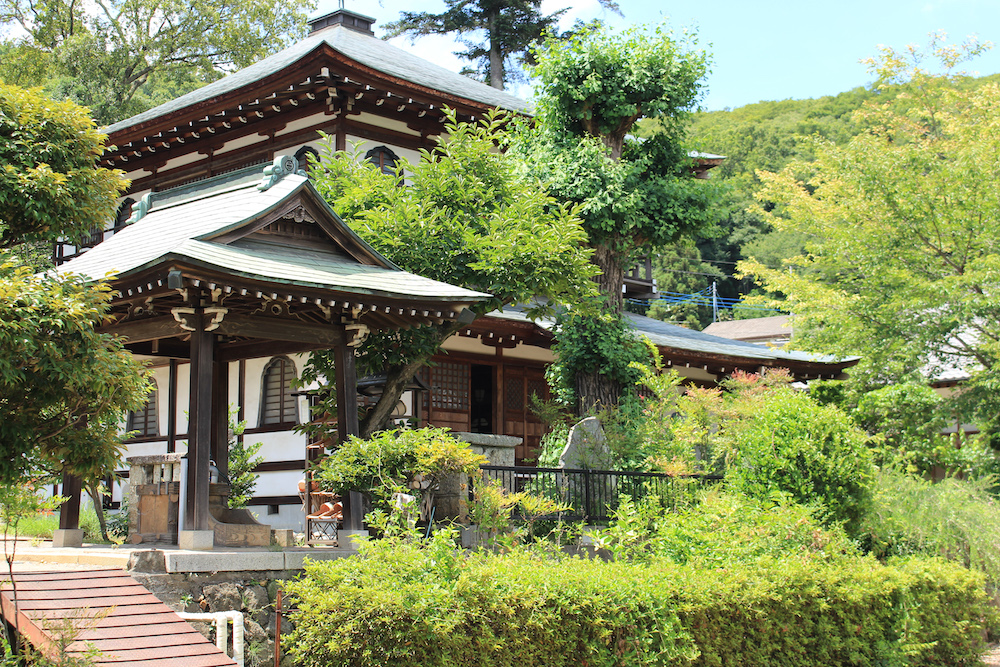The official name of Ginkakuji is Jisho-ji but it is better known to international tourists as the Silver Pavillion. The Ginkakuji is remarkably beautiful, which is not a coincidence because its commissioner had a great eye for beauty. Let’s learn more about the man who is responsible for the beauty of the Kyoto temple, and what you can find here!


History
Ashikaga Yoshimasa, the eighth shogun of the Muromachi period, originally built Ginkaku-ji as the Higashiyama-den Palace. After Yoshimasa’s death, the palace became a temple of the Rinzai Zen school, bearing the Buddhist posthumous name of Yoshimasa, Jisho-ji.
Yoshimasa became the head of the family at the age of 9 and the shogun at 15. His great interest was to pursue visual beauty. His Higashiyama-den Palace was built in the style of Higashiyama culture of refined simplicity. You can still see Yoshimasa’s quest for beauty in the Ginkaku-ji, even after 500 years.
In 1550, a battle took place near the Jisho-ji. Except for the Silver Pavilion and Togudo, all other buildings on the grounds were destroyed by fire. The temple then fell into ruins when the Muromachi shogunate was on its way down.
In 1615, at the beginning of the Edo period (1615-1868), Miyagi Tamba no Kami Toyomori restored the temple to its former glory, largely creating today’s Ginkaku-ji. Although it was originally built as a residence for the shogun, the buildings and gardens were redesigned in a suitable style for a Zen temple.
Location
Ginkaku-ji, like Kinkaku-ji, is related to the Shokoku-ji temple which was one of the 5 leading temples of Kyoto in the medieval period. Its official name is Higashiyama (Eastern Mountain) Jisho-ji. The gentle hills along Kyoto’s eastern edge are called Higashiyama, and since ancient times they have been considered to have a feminine sweetness. These mountains are a treasured part of Kyoto’s landscape. Ginkaku-ji is located in the foothills of Daimonjiyama.
The Philosopher’s Path is known as the favorite place to walk of philosopher Nishida Kitaro (1870-1945). It is a wonderful route to enjoy cherry blossoms in spring and fireflies in summer. The path passes through its main gate.
Constructions and Garden
The symbol of Jisho-ji that gives the temple its popular name is the national treasure Kannon-den. She is located in the Silver Pavilion. As an expression of his spiritual beliefs, Yoshimasa named the first-floor Shinku-den (Hall of the Empty Mind) and the second-floor Cho’on-kaku (Wave Sound Pavilion).
In front of the temple, you can see the white sand that forms the Ginshadan and the cone structure of Kogetsudai. Legend says that the Ginshadan must have reflected the moonlight and that the Kogetsudai seemed to be sitting on Higashiyama holding the moon. The contrast between the sandpile at Kogetsudai and the rolling appearance of Ginshadan invites visitors into a world that is difficult to leave behind.
The Ginkaku-ji temple is part of the ancient Kyoto Historical Monument complex, designated a UNESCO World Heritage Site in 1994. It is a must-see in the beautiful city of Kyoto.
Your Japan Tour
As seasoned Japan experts, we create perfect Japan package tours including destinations like Kyoto. Check out our group tours and private tours, or contact us to start planning your unforgettable holiday to this fascinating country full of once-in-a-lifetime experiences, culture, history, nature, and delicious food!
Ginkakuji Access Information
Access:
From Ginkakuji-Michi bus stop
Entrance fee:
Adult 500 yen, Elementary and Junior high school student 300 yen
Hours:
March to November: From 8.30 am to 5 pm
December to February: From 9 am to 4.30 pm

